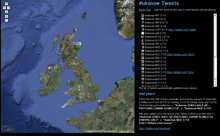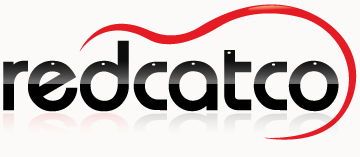Mass Collaboration – Snow Joke
Snow seems to be the theme of the week. My house is buried under the heaviest snow fall seen for 18 years. Inches deep. Now that might be a light dusting where you come from, but around here it is enough to bring the country to a standstill.
But unlike 18 years ago, this time I knew where the snow was falling, in real-time, and exactly what was happening with the trains too. How? Because of the power of mass collaboration. In a twist of fate, those new tools enabled me to embark on my journey to London this evening to listen to Clay Shirky talk about that very subject at LSE.
Clay Shirky delivers a précis of “Here comes everybody” (now available in paperback: UK|US
) in these 5 words: Group action just got easier. The book is something of a reference text for proponents of the power of social networks, and a concept will be familiar to readers of CauseWired.
Clay’s roots go deep back into the early days of the Internet. He has studied and written about them at length. Clay says that there are two things he has learnt from the last 15 years: Fast is different than slow and big is different than small. That might sound obvious, but it is actually profound in understanding these new tools.
“When it comes to networks, you can’t just extrapolate from small and slow to understanding the dynamics of large and fast.” Clay Shirky
Today’s networks, both in terms of telecommunications and social tools, are certainly both large and fast. In conversations I often frame the issue as quantitative change versus qualitative change. Technology that gains traction creates one or both of these. Quantitative changes are simply being able to do what we did before, but faster or larger. Qualitative changes are ones that fundamentally alter what we do or the way in which we do it.
It would seem logical that the linear nature of quantitative changes would make them much easier to predict (small and slow to large and fast), while qualitative changes would be more difficult, because of their disruptive nature. At least that is the commonly received wisdom. My experiences with technology say it doesn’t actually work that way.
People mis-predict technologies and put them into the wrong one of these buckets. Entrepreneurs usually believe they have something that produces a qualitative change, when it is actually a quantitative one. Conversely, many technologies that produce quantitative changes at first go on to affect society in a qualitatively way. The automobile changed how quickly we could get from A to B. Slow to Fast. Quantitative. But in doing so it changed where we could work, then our social circle and, ultimately, how society itself is constructed.
Lots of people view social media and social networking sites as agents of qualitative change. I think that doing so both overstates and understates them. Imagine, for a minute, that mass media had never happened. No radio. No TV. No newspapers. Wouldn’t it be quiet? You’d be able to hear the conversations.
Now, introduce social software. You’d have a nice linear move towards conversations that can take place across the globe rather than across the living room. From conversations with several people to ones that include hundreds. Sound familiar? They might include multimedia objects like photographs and videos too. The latter makes it tempting to compare phenomena like Facebook and Twitter to television or radio. That really isn’t a useful comparison. While they can, and do, turn into broadcast tools, with a single video receiving millions of views, they are misunderstood when viewed in that frame. What we are looking at is a return to a bigger faster version of conversations that were, rather that something that has never been.
Back to professor Shirky: We live in a time where tools like these, that lower the hassle factor of finding one and other and enabling collaboration, are changing the way that society works. Tools that started their life in the technical community have now spread out to touch every aspect of today’s society.
In the last 48 hours alone the BBC had tens of thousands of people sharing pictures and videos of the snow fall in the UK. I’ve watched myself and other Twitter users use the #uksnow tag, followed by the first part of their post code and a rating in messages to created data that produced a real-time view of the snow situation around the UK (thanks to an app built by Ben Marsh).
Another Ben, Ben Smith, has produced uktrains – a twitter feed with the very latest information on what is happening to train services in the disruption (there’s a wiki and a post about both of these on TechCrunch).
It’s all about the Benjamins, as a US rapper once said. Actually, it isn’t. These apps were both free. They might not be perfect – how do people agree on what constitutes a 4/10 rather than a 8/10 snow rating? – but they are more than “good enough” and certainly much better than the nothing that was before.
How much investment would have been required to build systems like this prior to web 2.0 and mass user contributed data? The user contribution of data is a major disruptor for traditional publishers and information services. If people are prepared to do what was once paid a job for free, that changes business models, at the very least.
We are in the midst of massive value destruction. Somewhere value creation is going on, but we haven’t quite found out where yet. On-line bulletin boards launched in the 1980’s, so the papers have had 20 years to get ready. While the world has changed around them, they have remained static. “This isn’t the transition from business model a to model b,” said Clay, “it is the transition from business a to business models b-z.” While a paper might report that X has happened, social media says X has happened, and this is what you can go and do about it.
Clay cited the example of the MySociety campaign, via a Facebook group, that saw Parliament reverse its attempt to conceal MP’s expenses. He also recounted the counter example of President Obama’s change.gov website. Within a short time after its launch, legalising Marijuana (for medical uses) was voted as the top public policy question facing America. As Clay notes, perhaps it ought to be a little lower down the list with matters like two wars and some collapsing banks that have to be dealt with – although I wonder if there might be some correlation there.
Clearly mass collaboration isn’t going to solve every problem. For the first time in public, Clay said, “I don’t think the technology is ready for the mass legitimisation of initiatives… …There need to be checks and balances applied”. That is a big, and wise, shift from his previously utopian view of what could be achieved. I’ve posted about crowds not providing the wisest answer for every situation before. When we think about the idea of direct access into the political process, we might want to think carefully about what exactly we are wishing for. The tools are fantastic for gathering feedback and generating content, but decision making requires a degree of sophistication that the tools do not provide, yet.
The problem now is not technical capability, it is legitimacy. Under what circumstances do you take the advice from user generated media and when do you ignore it? On-line we can’t do “one person one vote” – the basis of the democratic franchise – so we can’t legitimise it.
The problem is one for business leaders too. The answer may end up coming from government. What (now President) Obama started on the campaign trail, he will have to continue into the Whitehouse. Having opened the door to mass collaboration, that crowd is still looking over his shoulder and will not accept being shut out. Once you build a community, it doesn’t conveniently go away when you no longer have a need for it, it has a life of its own (something to note for businesses that just dabble in social media).
This will be a new and interesting phase for the tools of mass collaboration. “It is not just about politics, it is about government, and they are subtly different things,” observes Shirky.


Good material for pondering, benjamin.
Couldn’t agree more about ‘value destruction’ and also on the hunt for value creation. It might be naive, but it seems the destruction is happening amongst traditional businesses, particularly those involved in gate-keeping, whether it’s DRM on music, or charging for access to content (or it’s audience in the case of advertising).
Yet, the creation is happening around ‘free’. So, where’s the money coming from? A switch to freemium? What of the old-school content generators? Now more than ever, they seem lost.
Funny you should post about this now, the Chinwag LIve we’re planning for March is going to look at Freeconomics and the value in the new generation of business models (http://www.chinwag.com/live/freeconomics)
[…] Ellis has a long and thoughtful analysis of the presentation: Mass collaboration – snow joke: Clearly mass collaboration isn’t going to solve every problem. For the first time in public, […]
Thanks Sam – looks like a promising discussion! There is a whole other post just from the Q&A session, which covered what all this might mean for local media especially. DRM came up too (including Apple’s about-face on DRM). Anyway, you’ve given me the nudge for my next post.
Interesting times indeed – the cheese has not so much been moved as teleported to another galaxy (or potentially even vapourised)!
Great summary, looking forward to reading what you made of the Q&A
[…] evening talk, both picking up on the theme of mass collaboration in their respective posts here and here. On the subject of using social tools to bring about change, Benjamin writes: […]
[…] of decision making and crowd sourced wisdom. I hinted at some of my thoughts in the previous post (Mass Collaboration Snow Joke), and JP has also blogged about it, based on Clay Shirky’s talk at the ICA the day […]
[…] something for an on-line community of a tool that wasn’t even heard of a year ago. This is mass collaboration at work, CauseWired style. Thousands of people, amplified by technology, making a […]